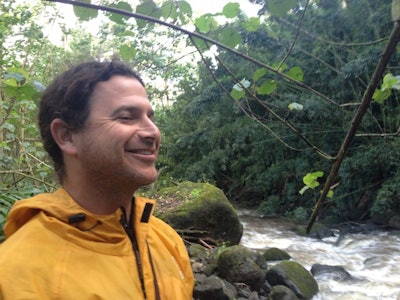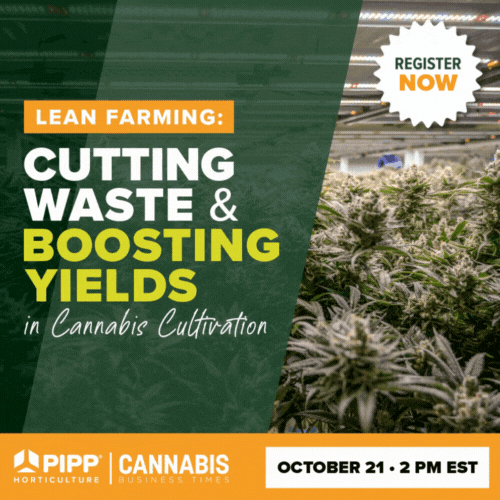
Improving cannabis' environmental impact is a growing concern and a priority for Greening Corporate Cannabis founder Jonathan Valdman. PLUS, 5 top-level ways to reduce indoor production's carbon footprint.
By Noelle Skodzinski
A bit of irony just might exist in the marijuana industry.
Prohibition forced marijuana growers “into the closet” and under artificial lights. “A whole industry developed,” says Jonathan Valdman, founder of the environmentally focused organization Greening Corporate Cannabis (GCC).
As legalization continues to spread like (pardon the overused pun) a weed, marijuana’s indoor growing habits have grown right alongside the new, legal industry.
Now, cannabis cultivation is moving into the spotlight for what prohibition has forced cannabis growers to do—grow indoors under artificial lighting. And the environmental impact is becoming a key focus for those concerned about both high energy bills and the industry’s carbon footprint.
These tidbits from a report by scientist/research analyst and Ph.D. Evan Mills, “Energy up in Smoke: The Carbon Footprint of Indoor Cannabis Production,” should give you a pretty clear idea why—especially if you consider that these stats are several years old:
Valdman notes that it takes the equivalent of a half-gallon of gasoline to produce one .5 gram joint of indoor lamp-grown cannabis?.
The good news? Valdman believes growers are increasingly coming “out of the closet and back under the sun.”
The transition, however, has been a slow one. The illegal atmosphere surrounding cannabis production has been understandably slow to dissipate. While marijuana remains a Schedule I drug and, as such, is considered illegal by the Federal government, anyone involved in cannabis production, distribution, possession or sale is potentially still at risk of prosecution. Of course, protections have been implemented in certain states, but the risk hovers like heavy smoke over an industry accustomed to looking over its shoulder.
The transition also is quite involved from a logistical and regulatory standpoint.
As Valdman explains, "After a heavy presence of Federal Drug Task Forces in Northern California—the U.S. area most prominently known for its large cannabis farms—in the late '80s, farmers were forced to hide under trees and eventually began to experiment growing indoors under high-powered, energy-consuming grow lights. … So began the evolution of what is commonly known as a 'hydro' store. HID lights, hydroponic solutions, meters and, of course, high electric bills became synonymous with the booming indoor market," he says.
"This state of normalcy for what in actuality is completely abnormal—cannabis is the only full-season plant on the planet being grown through their full life cycle under lights—has caused states to look toward warehouses, not farms, when designing recreational laws." —Jonathan Valdman
"As the hydro industry matured, so did the growing techniques and strains that were being used. By using grow lights and being able to control the photoperiod of the plant, growers were able to manipulate the flowering cycle of the plant and have up to 6 crops per year. This allowed people to begin to fine tune genetic breeding …," continues Valdman.
Though the latest 20 years have seen an increase in sun-grown cannabis, due to states passing medical laws, the still-federally-illegal nature of the crop has forced farmers to continue to grow under lights. Lamp-grown has become the norm. "This state of normalcy for what in actuality is completely abnormal—cannabis is the only full-season plant on the planet being grown strictly under lights—has caused states to look toward warehouses, not farms, when designing recreational laws," Valdman explains.
The other challenge to moving crops back under the sun, he says is that "investors in these projects see sun-grown as something that has not developed ‘proof of concept,’ so they are pouring their dollars into high-priced warehouses that are completely dependent on electric companies to provide the light that is needed to grow the crop."
This brings us to what Valdman points out as one of the biggest obstacles right now in the modern post-prohibition cannabis reality: reclassifying cannabis as an agricultural crop and not an industrial product. "Historically farmers look at water availability, soil fertility and sun exposure when choosing a location to farm. With current trending laws, they are instead pushed into industrial-zoned locations that often do not have water and have to truck in everything—from artificial sun light to soil," he says.
There is some more good news, however. “This is an energy-using sector that has almost uniquely been passed over by decades of efforts from many quarters to improve efficiency …. The time for that has come, and there is a lot of low-hanging fruit, which is good news to everyone concerned,” wrote Mills in a summary about his report.
And groups already exist to help the industry move forward in a more sustainable direction.
Greening Corporate Cannabis is in its early stages, as Valdman founded the group in late 2014 to bring like-minded people in the industry together to facilitate change. Despite the group’s youth, Valdman’s vision for it is quickly taking shape, including plans to launch an evaluation and certification program based around a business’s carbon footprint, environmental impact and resource management. His vision also includes working with other organizations, such as The Cannabis Conservancy, which, for example, he says, could step in after a company’s carbon footprint has been evaluated and quantified to help businesses improve their standard operating procedures and environmental impact.
Footprint evaluations are not to tell people how bad they are, notes Valdman, nor to suggest businesses do a complete overhaul overnight. “The idea is a transition. We’re interested in assisting them in the transition to better practices,” he explains. “There’s a learning curve with everything, and so we see that there is a transition process in going into a reduced-carbon-footprint reality.”
“We are working with already existing organizations—we’re not looking to compete with anybody—but we’re filling a niche that we feel is missing from this industry, and that is a holistic certification for everything from 'plant to pipe,' and everything in between.”
Valdman, however, has an even more grandiose goal for the group. “I really see Greening Corporate Cannabis as addressing the potential of this industry in becoming the first agricultural industry to become a global leader and wholly take in all the current technologies within agriculture, and creating a sustainable agricultural movement really focused on their carbon footprint, their impact on the environment, as well as being able to lead and guide what we know as business practices,” he says.
“I see the cannabis industry as the potential to show how businesses can positively affect the environment and how we can use our business dollars to create the communities that we want, to give back to the environment and to create a positive influence with what we’re doing,” Valdman notes.
A Legacy Grower Explores the Industry’s Legacy
Despite just launching Greening Corporate Cannabis, Valdman is not new to the industry, and his desire for change stemmed from watching the industry evolve from the “closet” culture to the legalized culture we are all now witnessing.
He first started legally growing medical cannabis when California passed the Compassionate Use Act, Proposition 215, in 1996 and spent a number of years researching indoor growing techniques before moving to Hawaii to get certified as a Permaculture Designer.
Valdman describes Permaculture as “the practice of creating systems that integrate within each other so that things have multiple functions, so that you’re having a positive impact on the environment, and all your systems are as efficient as possible. It’s a fairly large movement of farmers, movers and land developers that is going on,” he says.
His interests in greening the cannabis industry began when he was living in rural Northern California on a cannabis farm. “I saw everybody I know growing cannabis, eating organic, driving with biodiesel, wearing hemp, and yet had 100,000 watts of light burning in their barn, so I didn’t see the loop being closed,” Valdman explains.
Valdman believes the best idea is for the industry to put practices in place now—to improve before it becomes regulated.
Between his Hawaiian education and experience as a cannabis farmer and enthusiast, Valdman launched in 2006 what he saw as another solution to the industry’s energy challenges: a greenhouse company called Forever Flowering Greenhouses, based in Grass Valley, Calif., which applies fully automated, commercial-style light-deprivation techniques. (“Light deprivation refers to controlling the amount of sunlight, or the photoperiod within a greenhouse,” Valdman explains. “The methodology is no different than growing indoors, where you need 12 hours of darkness and 12 hours of light to have a plant go into flowering. Indoors that’s done by turning the lights on and off; in a greenhouse that’s done by blocking out the sun.”)
While Valdman and others in the industry see this as a pressing issue (sustainability was the topic at the recent National Cannabis Industry Association (NCIA) Cultivation Summit in Seattle), it will become even more pressing as the industry continues to grow, consuming even larger amounts of electricity and coming under more public scrutiny, nationally and globally. Valdman believes the best idea is for the industry to put practices in place now—to improve before it becomes regulated (a logical next step).
Still, while time is of the essence, as Mills pointed out in his report summary, low-hanging fruit will help many marijuana farms become more sustainable. He wrote: “Top-level pathways to reducing the carbon footprint of indoor production include:
And, Mills suggests that all industry constituents need to work together—from growers to designers and manufacturers of energy-consuming equipment used to grow marijuana to dispensaries, government officials, utility companies and the public.
Hence, the goal of Greening Corporate Cannabis in bringing like-minded people together from all walks of the industry into a think-tank environment—to help steer the industry along a path to a more sustainable future.
Editor's Note: Jonathan Valdman will be hosting a Greening Corporate Cannabis Workshop on June 29 at the National Cannabis Industry Association (NCIA) Cannabis Business Summit.



























